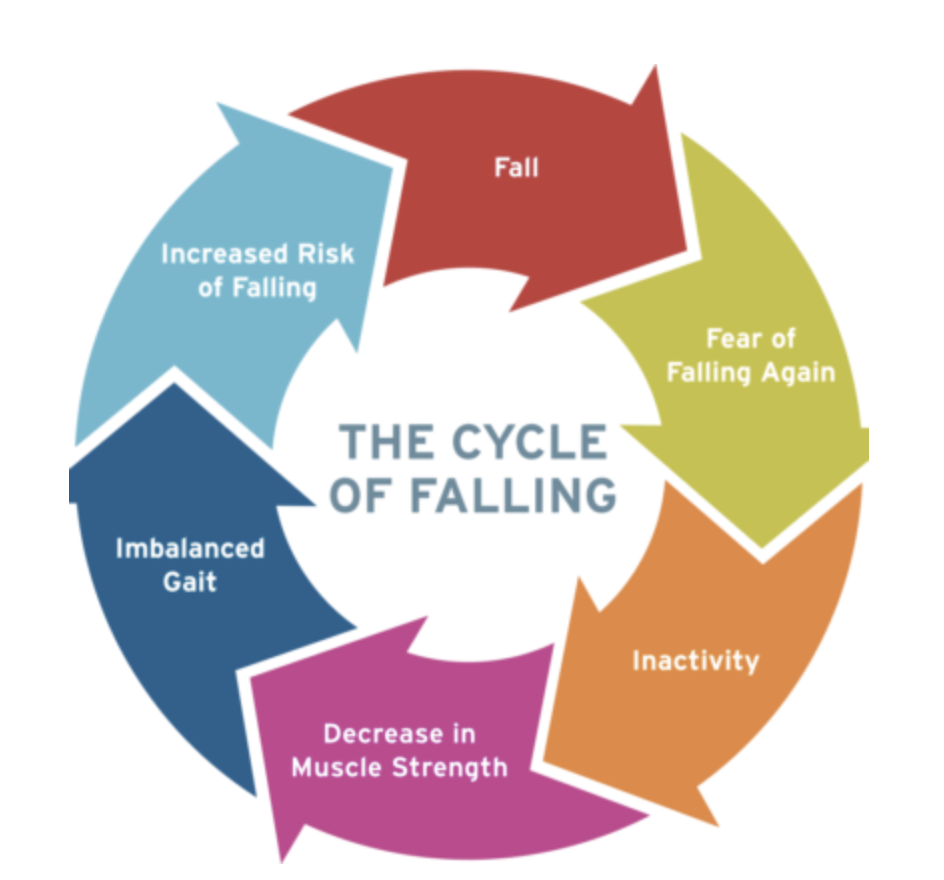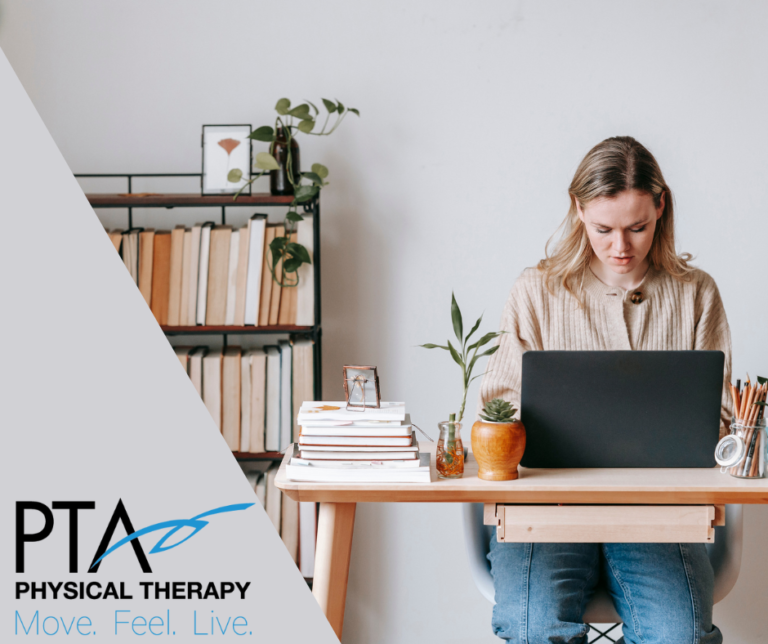REDUCING THE RISK OF FALLS
STATISTICS ON FALLS
Falls have become the leading cause of injury for older adults. 27.5% of individuals 65 years and older have reported at least one fall in the past year.1 These falls can lead to serious injuries that involve broken bones or head trauma. Each year over 800,000 people in this age group are hospitalized due to a fall injury and 95% of hip fractures are caused by a fall.2 However, falls are preventable. Working to recognize the modifiable risk factors in our lives can help reduce the chance of fall and injury.
WHAT FACTORS INFLUENCE FALLS?
Some major risk factors that contribute to increased fall risk are listed below. Falls are more likely to occur when there is a combination of these factors:3
-
Advancing age
-
Weakness
-
Environmental factors such as obstacles, slippery surfaces, or poor lighting
-
History of falling
Most of these risk factors can be managed by a medical provider such as your primary care physician and your physical therapist.Physical therapy can work to help address these risk factors such as weakness, balance, and changing your environment so that you can save a trip to the hospital. When asked about the factors contributing to a fall Dr. Gary Chimes, MD in Bellevue added, “When I see a patient who has recently fallen, my mind first goes to the question “why did they fall?” I want to distinguish between factors extrinsic to the patient (e.g., icy ground), and factors intrinsic to the patient (e.g., situational awareness, single leg balance).”
THE “FALL CYCLE”

As noted above, those who have a history of falls are at higher risk for additional falls. This pattern is known as the “fall cycle”.5 Individuals who have experienced a fall may develop a fear of falling due to a lack of confidence in their ability to independently navigate their home or perform daily functional activities. This fear of falling leads to a lower activity baseline, as the individual becomes less likely to participate in their usual activities throughout the day. The increase in sedentary lifestyle leads to a gradual overall loss of strength and balance, which perpetuates the likelihood of falls in the future.
WHAT CAN YOU DO TO LIMIT THE CHANCE OF FALLING?
-
Change your home environment: Make your home safer by reducing trip hazards. Clearing out cluttered walkways by removing loose wires, boxes, or taping down rugs will help decrease the chance of slipping or tripping. Consider using night lights to brighten up dark hallways or rooms to increase visibility and reduce the chance of falling. Speak to your PT for other tips and recommendations that can help decrease the risk of tripping and falling.
-
Routine check ups with your healthcare team: Maintain active communication with your primary care physician or pharmacist to help review medications that can induce dizziness, faintness, or drowsiness. Annual eye exams with your optometrist help ensure your visual acuity stays sharp so that you are able to recognize potential tripping hazards. Go see your local physical therapist to get assessed for fall risk. A physical therapist can work with you to address any strength and balance deficits that may be hindering your ability to safely navigate around your home and community.
-
Exercise and strength training: As we get older, we tend to lose muscle mass and strength at a faster rate.6 A higher percentage of older adults who reported no physical activity within the last month or adults who report difficulty with daily functional activities have reported of falls or fall related injuries.1 Incorporating a daily exercise routine can help improve mobility and balance. A physical therapist can assess your current baseline and develop an exercise routine with you to improve strength and balance.
EXERCISE OPTIONS AT HOME
-
Practice balance activities throughout the day! It doesn’t take any extra time to perform these exercises. For example, you can practice standing on one leg while brushing your teeth. Stand for 30 seconds at a time; by the time you are done brushing your teeth, you should be able to complete two sets on each leg. Single leg standing too hard? Try placing one foot in front of the other in “tandem stance” for a more moderate challenge instead.
-
Attend group exercise classes: Many local gyms offer free membership for adults 65 years or older through the Silver Sneakers Program. They may also offer live online classes and workshops that you can perform from the comfort of your own home. See the Silver Sneakers program for more information.
-
Practice getting on / off the ground: There are times when falls are inevitable. By practicing the activity of getting on and off the ground as part of your exercise routine, you will have the knowledge and capability to safely get back up if it does happen. This can be most easily accomplished by breaking down an activity into smaller tasks and learning the action in reverse order, a process known as back chaining. By starting in the most stable position of the process (sitting in a chair), you allow yourself to begin in a safe environment and progress towards stages that are more unstable (such as kneeling or laying down). You can work with your physical therapist to help build your confidence and strength so that you can safely get on and off the ground. Remember that in the event that you do happen to fall, a few steps may be necessary steps prior to getting up:
-
Stay calm
-
Check if the environment is safe to move around in
-
Access the injury and determine if you are safe and able to move
-
Call for help if needed
-
If you think you can get up but require assistance, move to a chair or other sturdy object you can hold onto to help pull yourself up
-
Follow up with a primary care doctor or physical therapist to determine any significant injuries
-
WHAT CAN PHYSICAL THERAPY DO FOR YOU?
Fear of falling can lead to social withdrawal and inactivity, and ultimately to decreased independence in your daily life. When asked about this Dr. Irene Young, MD in Bellevue commented, “Physical therapists play a critical role as they work with patients on a more frequent basis and can oversee their balance and strengthening program. Finding out about the patients day to day activities and potential fall hazards is important. Patients may also need to consider assistive devices at home and in the community to help with balance and gait.”
Physical therapy can help you break the Fall Cycle and regain your independence by working to improve your strength and balance. Starting a home exercise program under the supervision of a PT is a proactive way to stay safe and reduce your fall risk. Stop in and see your physical therapist today!
Click here to request an appointment: https://bit.ly/3jDdLDU
AUTHOR:
Hork Do, PT, DPT
LWPT Redmond Physical Therapist
CONTRIBUTORS:
Dr. Gary Chimes, MD
Lake Washington Sport & Spine Physiatrist
Dr. Irene Young, MD
Swedish Physical Medicine & Rehabilitation
Ben Wobker, PT, MSPT, CSCS, CFSC, SFMA
Founder & Director Lake Washington Physical Therapy




